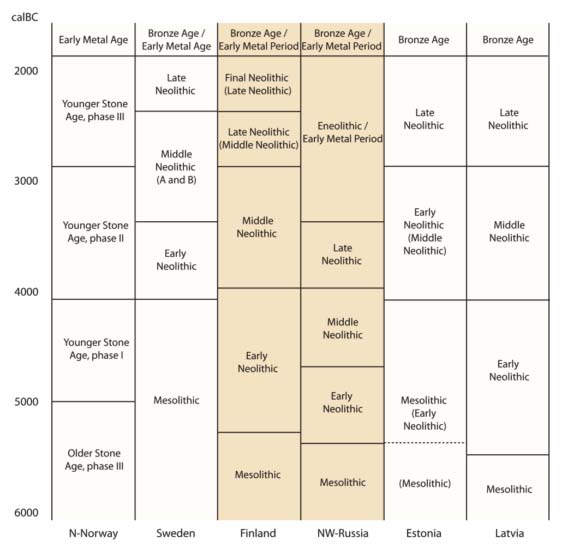THE PROCESS OF NEOLITHIZATION IN THE FOREST BELT
DOI:
https://doi.org/10.24852/2587-6112.2021.5.297.301Keywords:
archaeology, Neolithic, Neolithic package, forest belt, ceramics, polished woodworking tools, long-term dwelling, burial ground, sanctuary, mutually benefi cial exchangeAbstract
The paper presents an analysis of the most studied Neolithic cultures of the forest belt from Scandinavia and the Eastern Baltic States to the Volga-Kama region and the Urals (7th-4th Millennia BC). The analysis was carried out using the following elements of the Neolithic package: ceramics, polished woodworking tools, long-term dwellings, large burial grounds, shrines and imported items. In the course of the study, the materials representing 16 archaeological cultures of this region were collected by the author. As a result, the most developed Neolithic cultures of the forest belt were identified, with due account of the currently existing data. The most common features – ceramics and polished woodworking tools – were also identified. The rare feature is the presence of shrines. Conclusions are made on the level of development of the studied cultures.
References
Vybornov, A. A. 2009. Neolit stepnogo-lesostepnogo Povolzh’ia i Prikam’ia (Neolithic of Steppe and Forest-Steppe Belts in the Volga and Kama Rivers Basin). Diss. Of Doctor of Historical Dciences. Samara (in Russian).
Karmanov, V. N. 2008. Neolit evropeiskogo Severo-Vostoka (Neolithic of European Notheast). Syktyvkar: Komi Research Center, Ural Branch of the Russian Academy of Sciences (in Russian).
Lychagina, E. L. 2019 Neolit Verkhnego i Srednego Prikam'ia (Neolithic of the Upper and Middle Kama Regions) Diss. of doctor of historical Sciences. Perm (in Russian).
Nazarova, A. Yu. 2020. In Arkheologiia Evraziiskikh stepei (Archaeology of Eurasian Steppes) 5. 69–76 (in Russian).
Nazarova, A. Yu. 2021. In Evgen’ev, A. A. (ed.). LIII Uralo-Povolzhskaya arkheologicheskaya studencheskaya konferentsiya (UPASK, 1-3 fevralya 2021 goda): materialy vserossiyskoy (s mezhdunarodnym uchastiem) konferentsii studentov, aspirantov i molodykh uchenykh (53rd Ural-Volga Archaeological Student Conference (UPASK, February 1–3, 2021): Proceedings of the All-Russian (with International Participation) Conference of Students, Postgraduates and Young Scientists). Orenburg: Orenburg State Pedagogical University, 42–44 (in Russian).
In Oshibkina, S. V. (ed.). 1996. Neolit Severnoi Evrazii The (The Neolithic of Northern Eurasia). Series: Arkheologiia SSSR (Archaeology of the USSR). Moscow: “Nauka” Publ.(in Russian).
Nikitin, V. V. 2017. In Povolzhskaya arkheologiya (Volga River Region Archaeology) 21 (3), 168–189 (in Russian).
Oshibkina, S. V. 1996. In Oshibkina, S. V. (ed.). Neolit Severnoi Evrazii The (The Neolithic of Northern Eurasia). Series: Arkheologiia SSSR (Archaeology of the USSR). Moscow: “Nauka” Publ., 6–10 (in Russian).
Kriiska A., Oras E., Lõugas L., Meadows J., Lucquinand A., Craig O. E. 2017. In Estonian Journal of Archaeology, 21 (1), 52–86.
Nordqvist, K. 2018. The Stone Age of north-eastern Europe 5500-1800 calBC. Bridging the gap between the East and the West. Academic dissertstion. Acta Universitatis Ouluensis. B Humanitaria 160.
Raemaekers, D. 1998. In Anthropologie et Prehistoire. (109). 155–161 (in English).

Downloads
Published
How to Cite
Issue
Section
License
Copyright (c) 2021 Nazarova Anastasia Yu.

This work is licensed under a Creative Commons Attribution-NonCommercial 4.0 International License.







